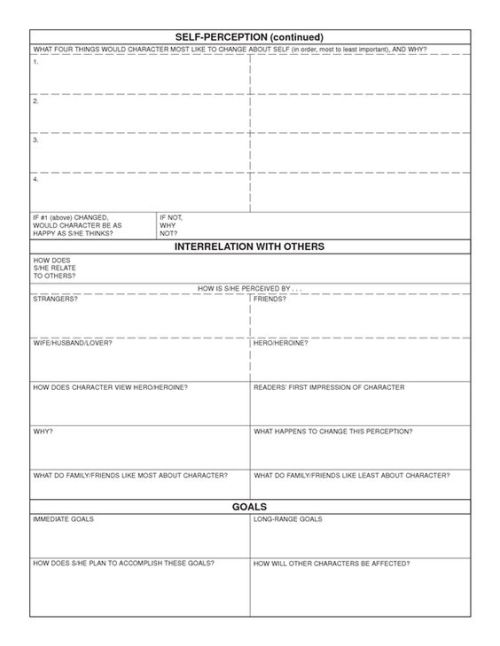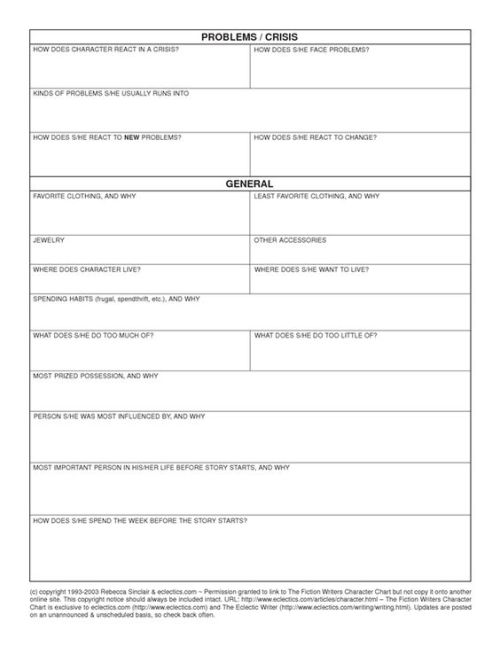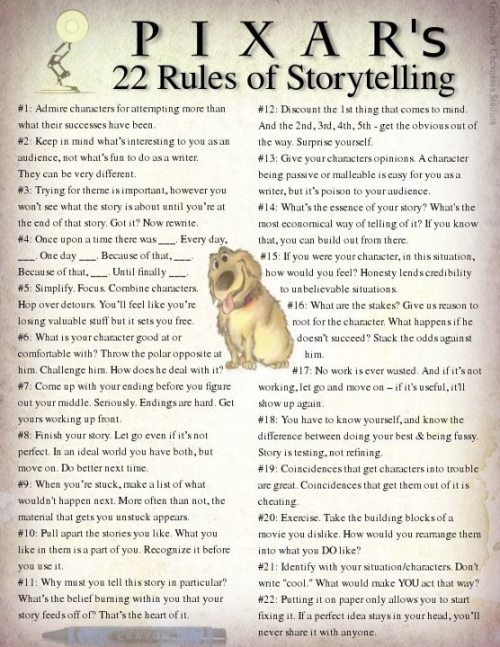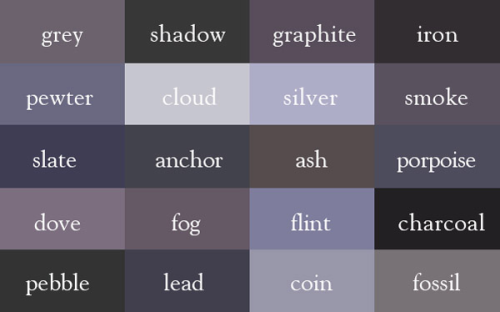
400 posts
Testing Out Popular (FREE) Writing Hacks
Testing out popular (FREE) writing hacks
There are a lot of writing hacks floating around, tips that are supposed to increase your writing productivity. Well, I tested them, and here are my thoughts:
1. Use Comic Sans
Let’s be honest. When we were in primary school, we typed EVERYTHING in Comic Sans. However, as we got older and more professional, Comic Sans appeared childish and we stopped using it.
Ask anyone what the most unprofessional font is and they’ll probably answer: Comic Sans MS
However, earlier this year the idea of using Comic Sans when writing your first draft started popping up and now, a lot of writers are swearing by it.
So, did it increase my productivity?
YES
I started writing a scene in Comic Sans and I wrote about five pages in like 30 minutes. The words just flowed. I don’t know why this font increases writing productivity, but if it works, I don’t really care why.
So, I would 100% recommend trying Comic Sans for your first draft. Remember, no one’s going to see it. And it’s pretty easy to change back to something like Times New Roman once you’ve finished a scene.
2. Dictation
I’ve heard a lot of professional authors rave about how much time they save by dictating their first drafts. However, a lot of dictation software and microphones are quite expensive. So, I tried the free alternatives at my disposal.
The latest version of OneNote, which comes included in a lot of Microsoft Office packages, now has a dictation feature. I know this isn’t technically free, but it was for me, since I already have Office installed. The OneNote mobile app is free, but I don’t know it is has this feature. And I just used the built-in microphone on my laptop. Google Docs also has a dictation feature, I think, but I haven’t tried it yet.
So, does it work?
The accuracy is surprisingly good. I dictated about three paragraphs this morning and only one or two words were incorrect. Also, OneNote’s dictation doesn’t allow for speaking punctuation, which means you’ll have to add these after the fact. Additionally, few people actually write in OneNote, so you’ll have to paste the text into your document.
Overall, this could be great for someone whose hands are tired of typing or who cannot sit at a desk any longer than their job already requires. However, it doesn’t really increase productivity. This may just be me, but I take longer to think up good sentences when I have to speak them. Then, I have to go back and add punctuation marks and correct some words. And then paste it into my draft document. It’s easier to just write it from the get-go.
However, some authors say that it just takes getting used to. So, maybe if you’re more of a verbal/audio thinker and don’t have your hands available at all times, this is a good hack for you. I just don’t think I’ll be using it much.
3. Writing sprints
This has been around for quite some time, but I only really started using it when I attempted Camp Nanowrimo during my test month. Essentially, writing sprints entail setting a timer for somewhere under an hour and then just focusing on getting as many words written as possible before the timer goes off. There are many published authors who swear by this.
So, does it increase productivity?
Yes. Firstly, it pushes you to write when you wouldn’t have in other circumstances, since it allows you to utilise even the smallest free periods. Have an hour between classes? Find a flat surface and do a writing sprint. Have to study all evening? Do a 25-minute sprint before you start. Secondly, it also helps you get more words down in that time, because you don’t have to worry about what you have to do next or whether your writing is any good. All you focus on is producing as many words as possible before that timer goes off.
So, if you’re a busy person, try using writing sprints here and there to increase your productivity.
4. Writing groups
Many authors enjoy the camaraderie and accountability that comes with writing with a lot of other people, whether it be in a physical space or an online group. There’s a set time everyone in the group will be writing and you keep one another company, checking up on one another’s progress and sharing motivation.
Does it increase productivity?
Not for me. This is largely a personal thing, but I actually get less writing done in the presence of other people. I’m more anxious. I get distracted by other people’s comments. And I constantly find myself wondering when the session will end. To me, writing is a solitary thing. I work best holed up in my room with no one around and no one leaving online comments about their own writing. Yes, I love checking in on others’ progress and sharing my own on Instagram, but only after my writing session has finished.
However, you may find that writing groups work for you. Maybe not being alone is just nicer for you, regardless of whether you get more words down or not. So, this one is definitely dependent on the individual.
5. Background noise
Some writers create signature playlists for each of their WIPs. Some write specific scenes to specific songs. Others use white noise or instrumentals. But it’s clear that writing with some form of background sound works for a lot of authors.
Let me start by saying that I cannot get any work done when listening to music with lyrics. So, I didn’t even try this. Instead, I tried fantasy instrumental playlists on YouTube, rainymood.com and ambient-mixer.com
Does it work?
Sometimes.
If I’m writing a fight scene, listening to epic battle music will help me write it faster. I write at my best during thunderstorms, so rainymood.com definitely increases my productivity. Ambient mixer offers a huge variety of ambient sounds to listen to, ranging from scary woods to driving with the Winchesters. “Quiet library” on ambient mixer helps a lot when I have to study, but not really when I have to write. So, yes, in certain instances, background noise helps me write faster. But, mostly, I enjoy writing in silence or with natural, real-life sounds around me.
Once again, this is purely personal. Regardless, I can definitely recommend the two websites I mentioned above.
So, that’s all I have for you today. I hope that these “reviews” can help you decide which writing hacks will work for you. Remember that my asks are always open for creative writing questions, and that post submissions are always welcome!
Reblog if you found this post useful. Comment if there are any writing hacks you’d like me to try out in the future. Follow me for similar content.
-
 animeschibia reblogged this · 9 months ago
animeschibia reblogged this · 9 months ago -
 kpopfantasywriter reblogged this · 10 months ago
kpopfantasywriter reblogged this · 10 months ago -
 heckcareoxytwit reblogged this · 1 year ago
heckcareoxytwit reblogged this · 1 year ago -
 also-jam1220-art liked this · 1 year ago
also-jam1220-art liked this · 1 year ago -
 ilikedyourablogithere reblogged this · 1 year ago
ilikedyourablogithere reblogged this · 1 year ago -
 heckcareoxytwit reblogged this · 1 year ago
heckcareoxytwit reblogged this · 1 year ago -
 villiansswing liked this · 1 year ago
villiansswing liked this · 1 year ago -
 victorian-lad liked this · 1 year ago
victorian-lad liked this · 1 year ago -
 tieflingteeth liked this · 1 year ago
tieflingteeth liked this · 1 year ago -
 dannybagpipesarecalling reblogged this · 1 year ago
dannybagpipesarecalling reblogged this · 1 year ago -
 heckcareoxytwit reblogged this · 1 year ago
heckcareoxytwit reblogged this · 1 year ago -
 heckcareoxytwit liked this · 1 year ago
heckcareoxytwit liked this · 1 year ago -
 getowork reblogged this · 1 year ago
getowork reblogged this · 1 year ago -
 spideronthesun liked this · 1 year ago
spideronthesun liked this · 1 year ago -
 wordcave reblogged this · 1 year ago
wordcave reblogged this · 1 year ago -
 adoravelegoista reblogged this · 1 year ago
adoravelegoista reblogged this · 1 year ago -
 hydrangeahelper liked this · 1 year ago
hydrangeahelper liked this · 1 year ago -
 inkdropsonrosequinn reblogged this · 1 year ago
inkdropsonrosequinn reblogged this · 1 year ago -
 inkdropsonrosequinn reblogged this · 1 year ago
inkdropsonrosequinn reblogged this · 1 year ago -
 dude-itz-fiction reblogged this · 1 year ago
dude-itz-fiction reblogged this · 1 year ago -
 ceryphil liked this · 1 year ago
ceryphil liked this · 1 year ago -
 alaniskingsdaughter liked this · 2 years ago
alaniskingsdaughter liked this · 2 years ago -
 naaaaayyyhaay liked this · 2 years ago
naaaaayyyhaay liked this · 2 years ago -
 gallavichprompts reblogged this · 2 years ago
gallavichprompts reblogged this · 2 years ago -
 sophia-ebooks reblogged this · 2 years ago
sophia-ebooks reblogged this · 2 years ago -
 ianandmickeygallavich1 liked this · 2 years ago
ianandmickeygallavich1 liked this · 2 years ago -
 pinkishfish802 liked this · 2 years ago
pinkishfish802 liked this · 2 years ago -
 my-reference-factory reblogged this · 2 years ago
my-reference-factory reblogged this · 2 years ago -
 sakuraki99 liked this · 2 years ago
sakuraki99 liked this · 2 years ago -
 jelliedoodles liked this · 2 years ago
jelliedoodles liked this · 2 years ago -
 nanamicide reblogged this · 2 years ago
nanamicide reblogged this · 2 years ago -
 carrochan reblogged this · 2 years ago
carrochan reblogged this · 2 years ago -
 carrochan liked this · 2 years ago
carrochan liked this · 2 years ago -
 kiarazuri reblogged this · 2 years ago
kiarazuri reblogged this · 2 years ago -
 creativelym3 liked this · 2 years ago
creativelym3 liked this · 2 years ago -
 targaryeninyourarea reblogged this · 2 years ago
targaryeninyourarea reblogged this · 2 years ago -
 kaylahastoomanyships liked this · 2 years ago
kaylahastoomanyships liked this · 2 years ago -
 writingsmathing reblogged this · 2 years ago
writingsmathing reblogged this · 2 years ago -
 justaghostinthesea liked this · 2 years ago
justaghostinthesea liked this · 2 years ago -
 savelil reblogged this · 2 years ago
savelil reblogged this · 2 years ago -
 savelil reblogged this · 2 years ago
savelil reblogged this · 2 years ago -
 elephant-reincarnation liked this · 2 years ago
elephant-reincarnation liked this · 2 years ago
More Posts from Inkdropsonrosequinn





© (c ) copyright 1990-2011 Rebecca Sinclair
See the original HERE
Story Structures for your Next WIP
hello, hello. this post will be mostly for my notes. this is something I need in to be reminded of for my business, but it can also be very useful and beneficial for you guys as well.
everything in life has structure and storytelling is no different, so let’s dive right in :)
First off let’s just review what a story structure is :
a story is the backbone of the story, the skeleton if you will. It hold the entire story together.
the structure in which you choose your story will effectively determine how you create drama and depending on the structure you choose it should help you align your story and sequence it with the conflict, climax, and resolution.
1. Freytag's Pyramid
this first story structure i will be talking about was named after 19th century German novelist and playwright.
it is a five point structure that is based off classical Greek tragedies such as Sophocles, Aeschylus and Euripedes.
Freytag's Pyramid structure consists of:
Introduction: the status quo has been established and an inciting incident occurs.
Rise or rising action: the protagonist will search and try to achieve their goal, heightening the stakes,
Climax: the protagonist can no longer go back, the point of no return if you will.
Return or fall: after the climax of the story, tension builds and the story inevitably heads towards...
Catastrophe: the main character has reached their lowest point and their greatest fears have come into fruition.
this structure is used less and less nowadays in modern storytelling mainly due to readers lack of appetite for tragic narratives.

2. The Hero's Journey
the hero's journey is a very well known and popular form of storytelling.
it is very popular in modern stories such as Star Wars, and movies in the MCU.
although the hero's journey was inspired by Joseph Campbell's concept, a Disney executive Christopher Vogler has created a simplified version:
The Ordinary World: The hero's everyday routine and life is established.
The Call of Adventure: the inciting incident.
Refusal of the Call: the hero / protagonist is hesitant or reluctant to take on the challenges.
Meeting the Mentor: the hero meets someone who will help them and prepare them for the dangers ahead.
Crossing the First Threshold: first steps out of the comfort zone are taken.
Tests, Allie, Enemies: new challenges occur, and maybe new friends or enemies.
Approach to the Inmost Cave: hero approaches goal.
The Ordeal: the hero faces their biggest challenge.
Reward (Seizing the Sword): the hero manages to get ahold of what they were after.
The Road Back: they realize that their goal was not the final hurdle, but may have actually caused a bigger problem than before.
Resurrection: a final challenge, testing them on everything they've learned.
Return with the Elixir: after succeeding they return to their old life.
the hero's journey can be applied to any genre of fiction.

3. Three Act Structure:
this structure splits the story into the 'beginning, middle and end' but with in-depth components for each act.
Act 1: Setup:
exposition: the status quo or the ordinary life is established.
inciting incident: an event sets the whole story into motion.
plot point one: the main character decided to take on the challenge head on and she crosses the threshold and the story is now progressing forward.
Act 2: Confrontation:
rising action: the stakes are clearer and the hero has started to become familiar with the new world and begins to encounter enemies, allies and tests.
midpoint: an event that derails the protagonists mission.
plot point two: the hero is tested and fails, and begins to doubt themselves.
Act 3: Resolution:
pre-climax: the hero must chose between acting or failing.
climax: they fights against the antagonist or danger one last time, but will they succeed?
Denouement: loose ends are tied up and the reader discovers the consequences of the climax, and return to ordinary life.

4. Dan Harmon's Story Circle
it surprised me to know the creator of Rick and Morty had their own variation of Campbell's hero's journey.
the benefit of Harmon's approach is that is focuses on the main character's arc.
it makes sense that he has such a successful structure, after all the show has multiple seasons, five or six seasons? i don't know not a fan of the show.
the character is in their comfort zone: also known as the status quo or ordinary life.
they want something: this is a longing and it can be brought forth by an inciting incident.
the character enters and unfamiliar situation: they must take action and do something new to pursue what they want.
adapt to it: of course there are challenges, there is struggle and begin to succeed.
they get what they want: often a false victory.
a heavy price is paid: a realization of what they wanted isn't what they needed.
back to the good old ways: they return to their familiar situation yet with a new truth.
having changed: was it for the better or worse?
i might actually make a operate post going more in depth about dan harmon's story circle.
5. Fichtean Curve:
the fichtean curve places the main character in a series of obstacles in order to achieve their goal.
this structure encourages writers to write a story packed with tension and mini-crises to keep the reader engaged.
The Rising Action
the story must start with an inciting indecent.
then a series of crisis arise.
there are often four crises.
2. The Climax:
3. Falling Action
this type of story telling structure goes very well with flash-back structured story as well as in theatre.

6. Save the Cat Beat Sheet:
this is another variation of a three act structure created by screenwriter Blake Snyder, and is praised widely by champion storytellers.
Structure for Save the Cat is as follows: (the numbers in the brackets are for the number of pages required, assuming you're writing a 110 page screenplay)
Opening Image [1]: The first shot of the film. If you’re starting a novel, this would be an opening paragraph or scene that sucks readers into the world of your story.
Set-up [1-10]. Establishing the ‘ordinary world’ of your protagonist. What does he want? What is he missing out on?
Theme Stated [5]. During the setup, hint at what your story is really about — the truth that your protagonist will discover by the end.
Catalyst [12]. The inciting incident!
Debate [12-25]. The hero refuses the call to adventure. He tries to avoid the conflict before they are forced into action.
Break into Two [25]. The protagonist makes an active choice and the journey begins in earnest.
B Story [30]. A subplot kicks in. Often romantic in nature, the protagonist’s subplot should serve to highlight the theme.
The Promise of the Premise [30-55]. Often called the ‘fun and games’ stage, this is usually a highly entertaining section where the writer delivers the goods. If you promised an exciting detective story, we’d see the detective in action. If you promised a goofy story of people falling in love, let’s go on some charmingly awkward dates.
Midpoint [55]. A plot twist occurs that ups the stakes and makes the hero’s goal harder to achieve — or makes them focus on a new, more important goal.
Bad Guys Close In [55-75]. The tension ratchets up. The hero’s obstacles become greater, his plan falls apart, and he is on the back foot.
All is Lost [75]. The hero hits rock bottom. He loses everything he’s gained so far, and things are looking bleak. The hero is overpowered by the villain; a mentor dies; our lovebirds have an argument and break up.
Dark Night of the Soul [75-85-ish]. Having just lost everything, the hero shambles around the city in a minor-key musical montage before discovering some “new information” that reveals exactly what he needs to do if he wants to take another crack at success. (This new information is often delivered through the B-Story)
Break into Three [85]. Armed with this new information, our protagonist decides to try once more!
Finale [85-110]. The hero confronts the antagonist or whatever the source of the primary conflict is. The truth that eluded him at the start of the story (established in step three and accentuated by the B Story) is now clear, allowing him to resolve their story.
Final Image [110]. A final moment or scene that crystallizes how the character has changed. It’s a reflection, in some way, of the opening image.
(all information regarding the save the cat beat sheet was copy and pasted directly from reedsy!)

7. Seven Point Story Structure:
this structure encourages writers to start with the at the end, with the resolution, and work their way back to the starting point.
this structure is about dramatic changes from beginning to end
The Hook. Draw readers in by explaining the protagonist’s current situation. Their state of being at the beginning of the novel should be in direct contrast to what it will be at the end of the novel.
Plot Point 1. Whether it’s a person, an idea, an inciting incident, or something else — there should be a "Call to Adventure" of sorts that sets the narrative and character development in motion.
Pinch Point 1. Things can’t be all sunshine and roses for your protagonist. Something should go wrong here that applies pressure to the main character, forcing them to step up and solve the problem.
Midpoint. A “Turning Point” wherein the main character changes from a passive force to an active force in the story. Whatever the narrative’s main conflict is, the protagonist decides to start meeting it head-on.
Pinch Point 2. The second pinch point involves another blow to the protagonist — things go even more awry than they did during the first pinch point. This might involve the passing of a mentor, the failure of a plan, the reveal of a traitor, etc.
Plot Point 2. After the calamity of Pinch Point 2, the protagonist learns that they’ve actually had the key to solving the conflict the whole time.
Resolution. The story’s primary conflict is resolved — and the character goes through the final bit of development necessary to transform them from who they were at the start of the novel.
(all information regarding the seven point story structure was copy and pasted directly from reedsy!)

i decided to fit all of them in one post instead of making it a two part post.
i hope you all enjoy this post and feel free to comment or reblog which structure you use the most, or if you have your own you prefer to use! please share with me!
if you find this useful feel free to reblog on instagram and tag me at perpetualstories
Follow my tumblr and instagram for more writing and grammar tips and more!

Pixars 22 Rules of Story Telling
IT’S NOT ‘PEEKED’ MY INTEREST
OR ‘PEAKED’
BUT PIQUED
‘PIQUED MY INTEREST’
THIS HAS BEEN A CAPSLOCK PSA
Color Synonyms
White

also: pale; blanched; sallow; pallid; waxen; spectral; translucent; albino;
Grey

also: dust; stone; pepper;
Black

also: coal; slate; dusky; ebon; shadow; murky;
Tan

also: flesh; khaki; cream; tawny;
Brown

also: henna; russet; sepia; chestnut; cocoa; drab; bronze;
Red

also: terracotta ; rouge; carmine; fire-engine; ruddy
Orange

also: pumpkin ; rust ;
Yellow

also: sunny; amber; saffron; hay; straw; platinum;
Green

also: viridescent; grass; jade; forest;
Blue

also: turquoise; cyan; ultramarine; royal; aqua; aquamarine;
Purple

also: berry; amaranthine;
Pink

also: flushed; candy; cherry blossom; petal pink ;
—– source: http://ingridsundberg.com/
—–additional synonyms added by me